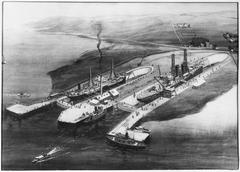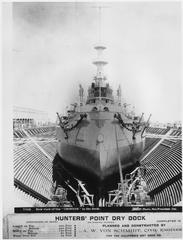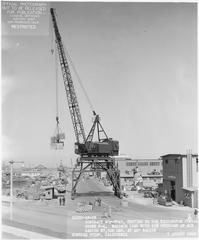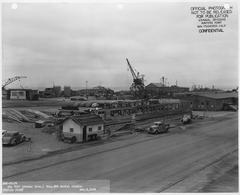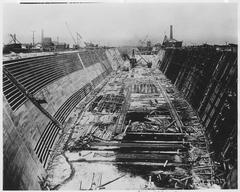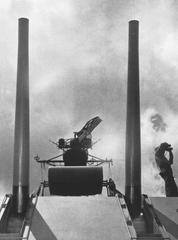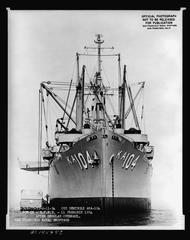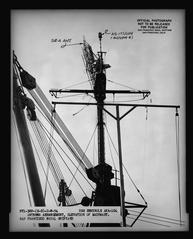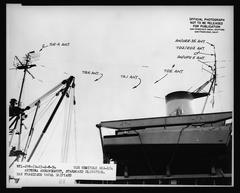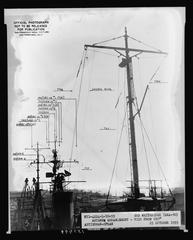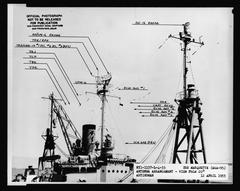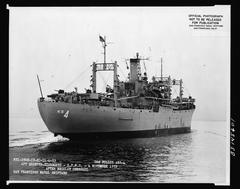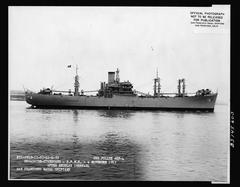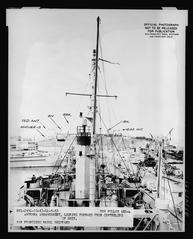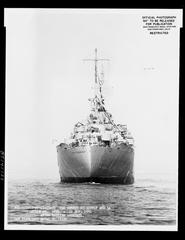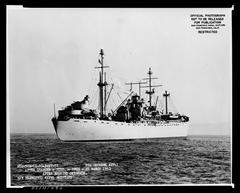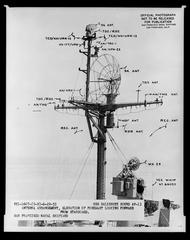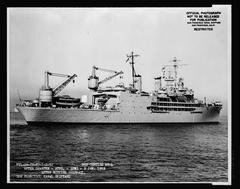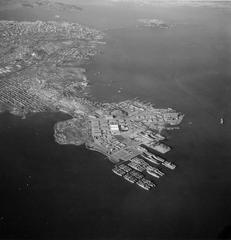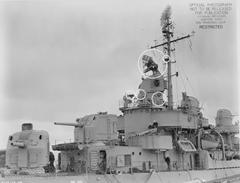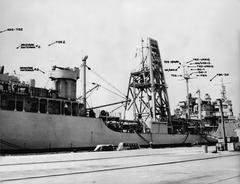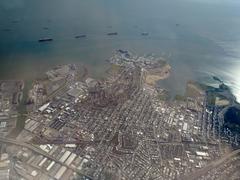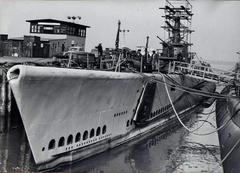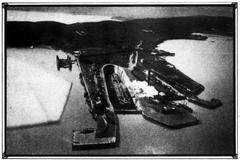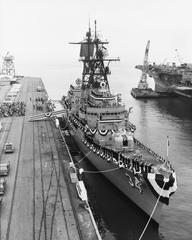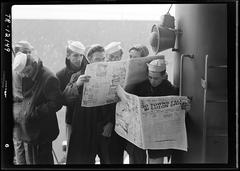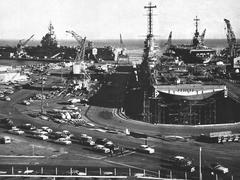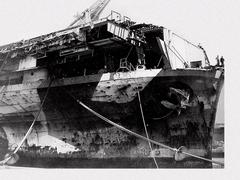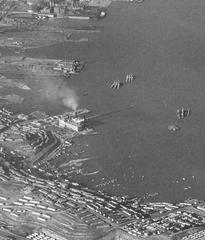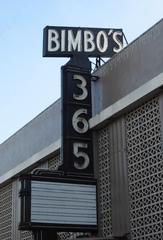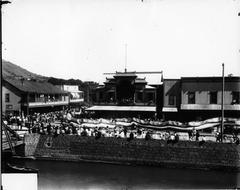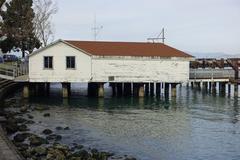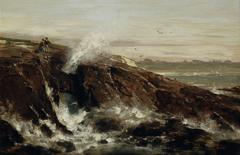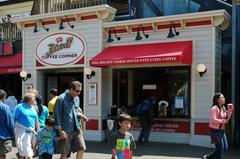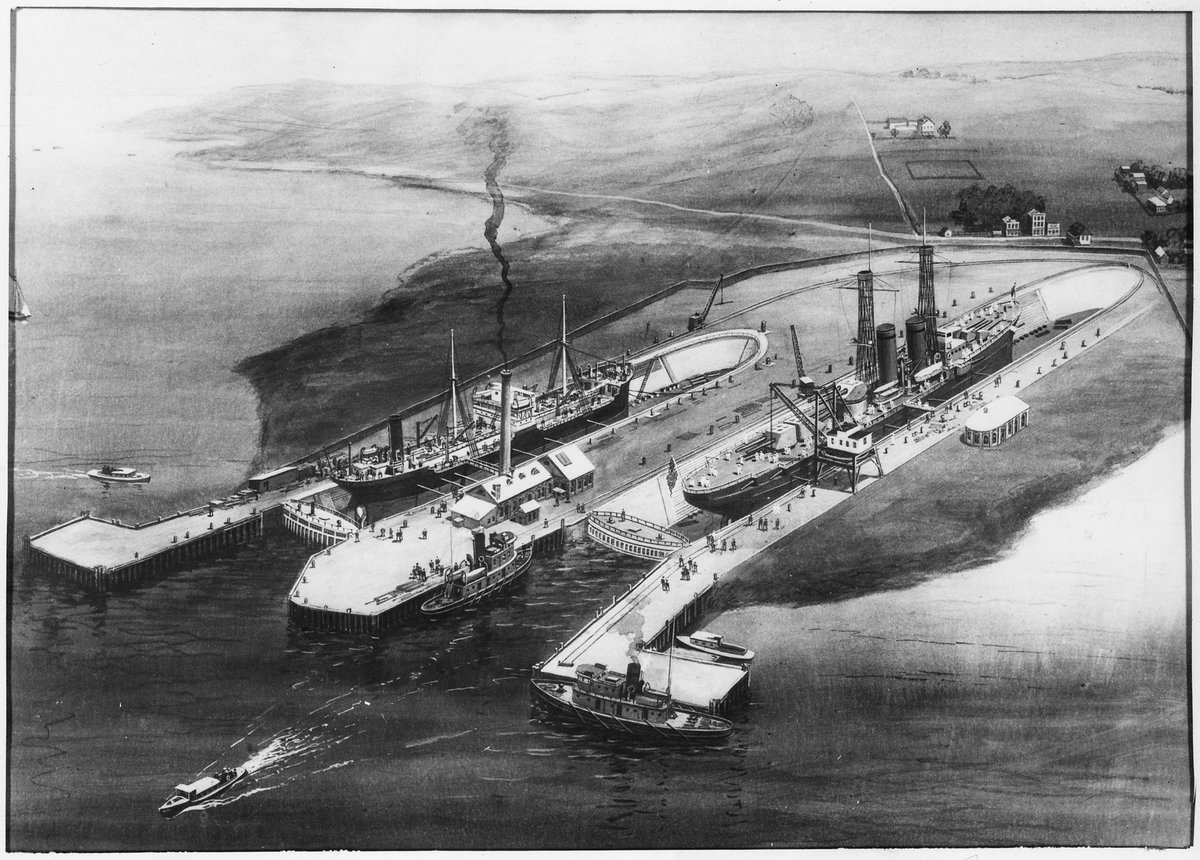
हंटर्स पॉइंट नेवल शिपयार्ड विज़िटिंग गाइड: सैन फ्रांसिस्को हिस्टोरिकल साइट
दिनांक: 14/06/2025
परिचय
हंटर्स पॉइंट नेवल शिपयार्ड, जो सैन फ्रांसिस्को के दक्षिण-पूर्वी वाटरफ़्रंट पर बेव्यू-हंटर्स पॉइंट पड़ोस में स्थित है, समुद्री और सैन्य इतिहास, सांस्कृतिक लचीलेपन और पर्यावरणीय परिवर्तन का एक स्थल है। कभी जहाज निर्माण और नौसैनिक नवाचार का एक हलचल भरा केंद्र, इसने द्वितीय विश्व युद्ध और शीत युद्ध के दौरान एक महत्वपूर्ण भूमिका निभाई, बाद में यह पर्यावरणीय न्याय और सामुदायिक सक्रियता का केंद्र बन गया। आज, यह स्थल व्यापक उपचार और पुनर्विकास से गुजर रहा है, जहाँ सार्वजनिक पहुँच सीमित है लेकिन सामुदायिक जुड़ाव और सांस्कृतिक पुनरोद्धार के अवसर बढ़ रहे हैं।
यह विस्तृत मार्गदर्शिका शिपयार्ड के बहुस्तरीय इतिहास, वर्तमान स्थिति, पर्यावरणीय सफाई, पुनर्विकास योजनाओं और व्यावहारिक आगंतुक युक्तियों - जिसमें पहुँच प्रतिबंध, विशेष कार्यक्रम और आस-पास के आकर्षण शामिल हैं - पर आवश्यक जानकारी प्रदान करती है। चाहे आप इतिहास के शौकीन हों, पर्यावरण समर्थक हों, या सैन फ्रांसिस्को की अनूठी विरासत का पता लगाने वाले आगंतुक हों, यह मार्गदर्शिका आपको हंटर्स पॉइंट नेवल शिपयार्ड के अतीत, वर्तमान और भविष्य को नेविगेट करने में मदद करेगी। (एटलस ऑब्स्क्यूरा; सैन फ्रांसिस्को सरकार; विकिपीडिया; सेंटर फॉर हेल्थ जर्नलिज्म)
सामग्री की तालिका
- परिचय
- प्रारंभिक उत्पत्ति और औद्योगिक वृद्धि
- द्वितीय विश्व युद्ध और नौसैनिक विस्तार
- शीत युद्ध युग और रेडियोलॉजिकल अनुसंधान
- युद्धोपरांत गिरावट और पर्यावरणीय विरासत
- स्वदेशी और सामुदायिक विरासत
- अफ्रीकी अमेरिकी प्रवासन और समुदाय का निर्माण
- पर्यावरणीय न्याय और सामुदायिक वकालत
- कलात्मक और सांस्कृतिक पुनरोद्धार
- वर्तमान स्थिति, सफाई प्रयास और पुनर्विकास
- आगंतुक जानकारी: घंटे, टिकट और यात्रा युक्तियाँ
- आस-पास के आकर्षण
- अक्सर पूछे जाने वाले प्रश्न (FAQ)
- निष्कर्ष
- स्रोत
प्रारंभिक उत्पत्ति और औद्योगिक वृद्धि
हंटर्स पॉइंट की समुद्री विरासत 19वीं शताब्दी के अंत में शुरू हुई, जब कैलिफ़ोर्निया ड्राई डॉक कंपनी ने 1868 में जहाज मरम्मत सुविधाओं की स्थापना की। आधिकारिक हंटर्स पॉइंट ड्राईडॉक की स्थापना 1870 में हुई थी, जिसमें उस समय दुनिया के सबसे बड़े ड्राई डॉक में से कुछ शामिल थे। 1900 के दशक की शुरुआत तक, यह स्थल यूनियन आयरन वर्क्स और बाद में बेथलहम शिपबिल्डिंग कंपनी द्वारा संचालित था, जिसने राष्ट्रपति थियोडोर रूजवेल्ट के ग्रेट व्हाइट फ्लीट जैसे प्रमुख जहाजों की सेवा की (विकिपीडिया)।
द्वितीय विश्व युद्ध और नौसैनिक विस्तार
द्वितीय विश्व युद्ध के दृष्टिकोण के साथ, अमेरिकी नौसेना ने 1940 में हंटर्स पॉइंट का अधिग्रहण किया। युद्धकालीन विस्तार ने इस स्थल को एक प्रमुख नौसैनिक शिपयार्ड में बदल दिया, जिसमें छह बड़े ड्राई डॉक और सैकड़ों जहाजों के निर्माण और मरम्मत की क्षमता थी। 1941 और 1945 के बीच, हंटर्स पॉइंट ने प्रशांत युद्ध के प्रयासों का समर्थन करते हुए, 200 से अधिक नौसैनिक जहाजों का निर्माण और सेवा की, और पूरे अमेरिका से हजारों श्रमिकों को रोजगार दिया (फोर्ब्स; फाउंडएसएफ)।
शीत युद्ध युग और रेडियोलॉजिकल अनुसंधान
युद्ध के बाद, हंटर्स पॉइंट नौसेना रेडियोलॉजिकल रक्षा प्रयोगशाला (NRDL) का घर बन गया, जो नौसेना का परमाणु हथियार प्रभाव और रेडियोलॉजिकल परिशोधन अनुसंधान का प्रमुख केंद्र था (1946-1969)। प्रशांत में परमाणु परीक्षणों के संपर्क में आए जहाजों को यहाँ परिशोधित किया गया था, और इस स्थल ने प्रारंभिक शीत युद्ध परमाणु विज्ञान में भूमिका निभाई। इस अवधि ने रेडियोधर्मी और खतरनाक कचरे की विरासत छोड़ी (SF.gov; एटलस ऑब्स्क्यूरा)।
युद्धोपरांत गिरावट और पर्यावरणीय विरासत
नौसेना के आकार में कमी के बाद, शिपयार्ड 1974 तक एक मरम्मत सुविधा के रूप में संचालित हुआ, 1980 के दशक में एक संक्षिप्त पुनरुद्धार के साथ 1994 में स्थायी रूप से बंद हो गया। दशकों की औद्योगिक और रेडियोलॉजिकल गतिविधि के कारण मिट्टी, भूजल और खाड़ी तलछट का महत्वपूर्ण संदूषण हुआ, जिसके परिणामस्वरूप 1989 में इसे एक संघीय सुपरफ़ंड साइट के रूप में नामित किया गया। सफाई और उपचार के प्रयास संघीय, राज्य और स्थानीय निरीक्षण के तहत जारी हैं (विकिपीडिया; सैन्य संग्रहालय)।
स्वदेशी और सामुदायिक विरासत
ओलोन उपस्थिति
शिपयार्ड से पहले, यह क्षेत्र ओलोन लोगों का घर था, जो हजारों वर्षों तक सैन फ्रांसिस्को खाड़ी के किनारे फले-फूले। पुरातात्विक साक्ष्य ओलोन मछली पकड़ने और इकट्ठा करने के लिए हंटर्स पॉइंट के तटरेखा के महत्व को उजागर करते हैं। औद्योगिक उपयोग के लिए परिदृश्य का परिवर्तन स्वदेशी भूगोल को बाधित करता है, लेकिन वर्तमान पुनर्विकास योजनाएं व्याख्यात्मक और स्मारक तत्वों के माध्यम से इस विरासत का सम्मान करने की मांग करती हैं (toxicsites.us; SF योजना सामान्य योजना)।
अफ्रीकी अमेरिकी प्रवासन और समुदाय का निर्माण
शिपयार्ड के युद्धकालीन विस्तार ने दक्षिण से अफ्रीकी अमेरिकी श्रमिकों को आकर्षित किया, जिसने ग्रेट माइग्रेशन में योगदान दिया। 1945 तक, बेव्यू-हंटर्स पॉइंट की अश्वेत आबादी में 665% से अधिक की वृद्धि हुई, जिससे चर्चों, सामाजिक क्लबों और व्यवसायों का एक जीवंत समुदाय बना। 1974 में शिपयार्ड के बंद होने से नौकरियों का नुकसान और आर्थिक चुनौतियाँ हुईं, लेकिन यह पड़ोस सैन फ्रांसिस्को में अश्वेत सांस्कृतिक जीवन का एक महत्वपूर्ण केंद्र बना हुआ है (centerforhealthjournalism.org)।
पर्यावरणीय न्याय और सामुदायिक वकालत
संदूषण और स्वास्थ्य प्रभाव
शिपयार्ड और एनआरडीएल संचालन के दशकों ने रेडियोधर्मी कचरे, पीसीबी, भारी धातुओं और पेट्रोलियम हाइड्रोकार्बन सहित खतरनाक पदार्थों को पीछे छोड़ दिया (sf.gov; toxicsites.us)। आसपास के समुदाय, मुख्य रूप से अश्वेत और निम्न-आय वर्ग के परिवारों ने, कैंसर और श्वसन संबंधी बीमारियों की बढ़ी हुई दरों का सामना किया है (sfbayview.com)।
जमीनी स्तर का जुटाव
समुदाय की सक्रियता ने पूरी तरह से सफाई और पारदर्शिता की वकालत करने में महत्वपूर्ण भूमिका निभाई है। 2000 में, प्रस्ताव पी ने नौसेना से साइट को उच्चतम मानकों पर साफ करने का आह्वान किया। चल रहे सामुदायिक जुड़ाव यह सुनिश्चित करता है कि निवासियों का उपचार और पुनर्विकास में आवाज हो (sfbayview.com)।
कलात्मक और सांस्कृतिक पुनरोद्धार
हंटर्स पॉइंट शिपयार्ड सैन फ्रांसिस्को के सबसे बड़े कलाकार समुदायों में से एक का घर है। लगभग 300 कलाकार ऐतिहासिक नौसैनिक इमारतों में स्टूडियो पर कब्जा करते हैं, जो शिपयार्ड को रचनात्मकता और नवीनीकरण के केंद्र के रूप में पुन: कल्पना करने वाले ओपन स्टूडियो और प्रदर्शनियों की मेजबानी करते हैं (SF योजना सामान्य योजना)। सार्वजनिक कला, व्याख्यात्मक साइनेज और सामुदायिक कार्यक्रम स्थल के बहुस्तरीय इतिहास का जश्न मनाते हैं।
वर्तमान स्थिति, सफाई प्रयास और पुनर्विकास
पर्यावरणीय उपचार
यू.एस. नौसेना, ईपीए, कैलिफ़ोर्निया डीटीएससी और स्थानीय एजेंसियां मिट्टी की खुदाई, रेडियोलॉजिकल स्कैनिंग, भूजल उपचार और दूषित क्षेत्रों को कवर करने से जुड़े बहु-चरणीय सफाई की देखरेख करती हैं। कुछ पार्सल की पूर्णता 2028 और 2036 के बीच अपेक्षित है (SF DPH स्वास्थ्य आयोग पीडीएफ)। पार्सल ए को आवासीय और कलाकार उपयोगों के लिए सुरक्षित माना गया है; अन्य पार्सल उपचार के अधीन बने हुए हैं।
सामुदायिक स्वास्थ्य और पर्यावरणीय न्याय
बेव्यू-हंटर्स पॉइंट ऐतिहासिक संदूषण से जुड़े स्वास्थ्य चुनौतियों का सामना करना जारी रखता है। पर्यावरणीय न्याय संगठन वायु गुणवत्ता और स्वास्थ्य परिणामों को बेहतर बनाने के लिए सामुदायिक उत्सर्जन न्यूनीकरण योजना (CERP) जैसी पहलों पर सार्वजनिक स्वास्थ्य एजेंसियों के साथ काम करते हैं (SF DPH स्वास्थ्य आयोग पीडीएफ, स्लाइड 13)।
पुनर्विकास विजन
सामुदायिक निवेश और अवसंरचना कार्यालय (OCII) एक मिश्रित-उपयोग वाले पड़ोस के लिए योजनाओं का मार्गदर्शन कर रहा है:
- किफायती और बाजार-दर-दर आवास
- पार्क और खुले स्थान
- सामुदायिक और खुदरा स्थान पुनर्विकास चरणों में होता है, पार्सल केवल नियामक सुरक्षा मानकों को पूरा करने के बाद खोले जाते हैं। सामुदायिक इनपुट स्मारक सुविधाओं और सार्वजनिक स्थानों को आकार देता है (SF DPH स्वास्थ्य आयोग पीडीएफ, स्लाइड 6)।
आगंतुक जानकारी: घंटे, टिकट और यात्रा युक्तियाँ
सार्वजनिक पहुँच
शिपयार्ड का अधिकांश हिस्सा चल रहे उपचार के कारण बंद है। सामान्य पहुँच प्रतिबंधित है, और कोई नियमित आगंतुक घंटे या दैनिक दौरे नहीं हैं।
- विशेष कार्यक्रम: कला कार्यक्रमों के दौरान सार्वजनिक पहुँच की अनुमति है जैसे हंटर्स पॉइंट शिपयार्ड आर्टिस्ट्स ओपन स्टूडियो (आमतौर पर वर्ष में दो बार)।
- टिकट: इन कार्यक्रमों के लिए टिकट मुफ्त या भुगतान वाले होते हैं; विवरण के लिए हंटर्स पॉइंट शिपयार्ड आर्टिस्ट्स वेबसाइट देखें।
- निर्देशित पर्यटन: कभी-कभी सामुदायिक संगठनों द्वारा पेश किए जाते हैं।
पहुँच
कार्यक्रमों के दौरान खुले क्षेत्रों में व्हीलचेयर की पहुँच है। संदूषण के कारण, कुछ भागों में पहुँच सीमित हो सकती है - अपनी यात्रा से पहले पुष्टि करें।
परिवहन
पार्किंग सीमित होने के कारण सार्वजनिक पारगमन (मुनि बसें) या राइडशेयर का उपयोग करें। कार्यक्रम आयोजक वर्तमान परिवहन और पार्किंग अपडेट प्रदान करते हैं।
आस-पास के आकर्षण
अपनी यात्रा को बढ़ाकर इनका अन्वेषण करें:
- बेव्यू ओपेरा हाउस: ऐतिहासिक सामुदायिक कला स्थल
- इंडिया बेसिन शोरलाइन पार्क: वाटरफ़्रंट ट्रेल्स और दृश्य
- कैंडलस्टिक पॉइंट स्टेट रिक्रिएशन एरिया: आउटडोर मनोरंजन और पिकनिक
- स्थानीय भोजनालय और दुकानें: बेव्यू के जीवंत समुदाय का अनुभव करें
अक्सर पूछे जाने वाले प्रश्न (FAQ)
प्रश्न: क्या मैं किसी भी दिन शिपयार्ड जा सकता हूँ? ए: नहीं, विशेष कार्यक्रमों या ओपन स्टूडियो सप्ताहांत को छोड़कर सामान्य पहुँच बंद है।
प्रश्न: क्या टिकट की आवश्यकता है? ए: कुछ कार्यक्रमों के लिए टिकटों की आवश्यकता होती है। विवरण के लिए इवेंट वेबसाइट देखें।
प्रश्न: क्या स्थल सुरक्षित है? ए: केवल अधिकृत और उपचारित क्षेत्रों को आगंतुकों के लिए खोला गया है। सभी पोस्ट किए गए सुरक्षा संकेतों का पालन करें।
प्रश्न: क्या सार्वजनिक पारगमन है? ए: हाँ, मुनि बसें बेव्यू-हंटर्स पॉइंट में सेवा प्रदान करती हैं।
प्रश्न: आस-पास और क्या देख सकते हैं? ए: बेव्यू ओपेरा हाउस, इंडिया बेसिन पार्क और कैंडिलस्टCK पॉइंट आस-पास के आकर्षण हैं।
निष्कर्ष
हंटर्स पॉइंट नेवल शिपयार्ड सैन फ्रांसिस्को के समुद्री, सैन्य और सांस्कृतिक विरासत के एक शक्तिशाली प्रमाण के रूप में खड़ा है। जबकि पर्यावरणीय सफाई सामान्य पहुँच को सीमित करती है, स्थल का परिवर्तन सामुदायिक-संचालित नवीनीकरण और ऐतिहासिक स्मरण के लिए आशा प्रदान करता है। विशेष कार्यक्रम, कलाकार स्टूडियो और आस-पास के आकर्षण क्षेत्र के अतीत और वर्तमान से जुड़ने के दुर्लभ अवसर प्रदान करते हैं। एक समृद्ध और सम्मानजनक अनुभव के लिए, पहुँच के बारे में सूचित रहें, सुरक्षा प्रोटोकॉल का पालन करें, और स्थानीय कलाकारों और व्यवसायों का समर्थन करें।
ऑडियला ऐप डाउनलोड करके, हंटर्स पॉइंट समाचारों का अनुसरण करके, और संबंधित सैन फ्रांसिस्को ऐतिहासिक स्थलों का पता लगाकर अद्यतन रहें। जिम्मेदारी से जुड़कर, आगंतुक हंटर्स पॉइंट के इतिहास का सम्मान करने और लचीलेपन और नवीनीकरण के प्रतीक के रूप में इसके भविष्य का समर्थन करने में योगदान करते हैं।
दृश्य: ऐतिहासिक इमारतों, कलाकार स्टूडियो, सार्वजनिक कला और सामुदायिक कार्यक्रमों के शिपयार्ड के उच्च-गुणवत्ता वाले चित्र शामिल करें। “हंटर्स पॉइंट शिपयार्ड विज़िटिंग घंटे,” “हंटर्स पॉइंट शिपयार्ड टिकट,” और “सैन फ्रांसिस्को हिस्टोरिकल साइट्स” जैसे ऑल्ट टैग का उपयोग करें।
अधिक जानकारी के लिए, नीचे दिए गए आधिकारिक स्रोतों और सामुदायिक वेबसाइटों पर जाएँ।
स्रोत
- एटलस ऑब्स्क्यूरा: हंटर्स पॉइंट शिपयार्ड
- सैन फ्रांसिस्को सरकार - हंटर्स पॉइंट सफाई स्थिति
- SF DPH स्वास्थ्य आयोग पीडीएफ
- सेंटर फॉर हेल्थ जर्नलिज्म: हंटर्स पॉइंट की दुखद विषाक्त विरासत
- विकिपीडिया: हंटर्स पॉइंट नेवल शिपयार्ड
- SF.gov: हंटर्स पॉइंट सफाई जानें
- फोर्ब्स: हंटर्स पॉइंट पुनर्विकास
- toxicsites.us
- SF योजना सामान्य योजना
- sfbayview.com
- सैन्य संग्रहालय
ऑडियला2024{‘date’: ‘14/06/2025’, ‘task’: {‘model’: ‘gpt-4.1-mini’, ‘query’: ‘Comprehensive guide to visiting Hunters Point Naval Shipyard, San Francisco, United States: history, significance, visitor tips, and everything tourists need to know for a memorable experience.’, ‘verbose’: False, ‘guidelines’: [“Keyword Research: Identify relevant keywords that potential visitors are likely to search for, such as ‘[Monument Name] visiting hours,’ ‘[Monument Name] tickets,’ and ‘[City] historical sites.’ Use these keywords strategically throughout the article, including in the title, headers, and body text, but avoid keyword stuffing.”, ‘Engaging and Informative Title: Craft a title that is both SEO-friendly and compelling to encourage clicks. Include the main keyword and make it clear what the article will cover.’, ‘Structured Content: Use headings (H1, H2, H3) to organize the content effectively. This helps with SEO and makes the article easier for readers to navigate. Include an introduction that hooks the reader, a detailed body that covers all relevant aspects, and a conclusion that summarizes the key points.’, ‘Comprehensive Coverage: Address common questions and topics of interest such as the history of the monument, its cultural significance, visitor information (e.g., ticket prices, opening hours), travel tips, nearby attractions, and accessibility. Include sections that might be unique to the monument, like special events, guided tours, and photographic spots.’, ‘Quality Content: Ensure the content is well-researched, accurate, and provides real value to readers. Use reliable sources and provide factual information. Write in a clear, engaging, and accessible style. Consider your audience and use language that is appropriate for those likely to visit the monument.’, ‘Visuals and Media: Incorporate high-quality images or videos of the monument. These should be optimized for the web (correct sizing, alt tags with keywords). Consider interactive elements like virtual tours or maps.’, ‘Internal and External Links: Include links to other related articles on your site to encourage deeper engagement (internal links). Link to official websites for the monument or credible sources for further reading (external links).’, ‘FAQ: Incorporate FAQ sections to target voice search queries and featured snippets’, ‘Visit and Stay Up to Date: End the article with a call to action, such as encouraging readers to download our mobile app Audiala, check out other related posts, or follow on social media for more updates.’], ‘max_sections’: 4, ‘publish_formats’: {‘pdf’: False, ‘docx’: False, ‘markdown’: True}, ‘follow_guidelines’: True}, ‘title’: ‘Comprehensive Guide to Visiting Hunters Point Naval Shipyard, San Francisco, United States’, ‘report’: ’# Hunters Point Naval Shipyard Visiting Guide: San Francisco Historical Site \n#### Date: 14/06/2025\n\n## Introduction\n\nHunters Point Naval Shipyard, located on San Francisco’s southeastern waterfront in the Bayview-Hunters Point neighborhood, is a landmark of maritime and military history, cultural resilience, and environmental transformation. Once a bustling hub for shipbuilding and naval innovation, it played a pivotal role during World War II and the Cold War, later becoming a focal point for environmental justice and community activism. Today, the site is undergoing extensive remediation and redevelopment, with limited public access but growing opportunities for community engagement and cultural revitalization.\n\nThis detailed guide provides essential information on the shipyard’s layered history, current status, environmental cleanup, redevelopment plans, and practical visitor tips—including access restrictions, special events, and nearby attractions. Whether you are a history enthusiast, environmental advocate, or visitor seeking to explore San Francisco’s unique heritage, this guide will help you navigate Hunters Point Naval Shipyard’s past, present, and future. (Atlas Obscura; San Francisco Government; Wikipedia; Center for Health Journalism)\n\n---\n\n## Table of Contents\n\n- Introduction\n- Early Origins and Industrial Growth\n- World War II and Naval Expansion\n- Cold War Era and Radiological Research\n- Postwar Decline and Environmental Legacy\n- Indigenous and Community Heritage\n- African American Migration and Community Formation\n- Environmental Justice and Community Advocacy\n- Artistic and Cultural Revitalization\n- Current Status, Cleanup Efforts, and Redevelopment\n- Visiting Information: Hours, Tickets, and Travel Tips\n- Nearby Attractions\n- FAQ\n- Conclusion\n- Sources\n\n---\n\n## Early Origins and Industrial Growth\n\nHunters Point’s maritime legacy began in the late 19th century, when the California Dry Dock Company established ship repair facilities in 1868. The official Hunters Point Drydocks were founded in 1870, featuring some of the world’s largest drydocks at the time. By the early 1900s, the site was operated by Union Iron Works and later the Bethlehem Shipbuilding Company, servicing major vessels such as those of President Theodore Roosevelt’s Great White Fleet (Wikipedia).\n\n---\n\n## World War II and Naval Expansion\n\nWith the approach of World War II, the U.S. Navy acquired Hunters Point in 1940. Wartime expansion transformed the site into a major naval shipyard, with six large drydocks and the capability to build and repair hundreds of ships. Between 1941 and 1945, Hunters Point built and serviced over 200 naval vessels, supporting the Pacific war effort and employing thousands of workers from across the U.S. (Forbes; FoundSF)\n\n---\n\n## Cold War Era and Radiological Research\n\nAfter the war, Hunters Point became home to the Naval Radiological Defense Laboratory (NRDL), the Navy’s principal center for nuclear weapons effects and radiological decontamination research (1946–1969). Ships exposed to atomic tests in the Pacific were decontaminated here, and the site played a role in early Cold War nuclear science. This period left a legacy of radioactive and hazardous waste (SF.gov; Atlas Obscura).\n\n---\n\n## Postwar Decline and Environmental Legacy\n\nFollowing the Navy’s downsizing, the shipyard operated as a repair facility until its closure in 1974, with a brief reopening in the 1980s before permanent closure in 1994. Decades of industrial and radiological activity led to significant contamination of soil, groundwater, and bay sediment, resulting in its designation as a federal Superfund site in 1989. Cleanup and remediation efforts continue under federal, state, and local oversight (Wikipedia; Military Museum).\n\n---\n\n## Indigenous and Community Heritage\n\n### Ohlone Presence\n\nBefore the shipyard, the area was home to the Ohlone people, who thrived along the San Francisco Bay for thousands of years. Archaeological evidence highlights the significance of Hunters Point’s shoreline for Ohlone fishing and gathering. The transformation of the landscape for industrial use disrupted indigenous geography, but current redevelopment plans seek to honor this heritage through interpretive and commemorative elements (toxicsites.us; SF Planning General Plan).\n\n---\n\n## African American Migration and Community Formation\n\nThe shipyard’s wartime expansion drew African American workers from the South, contributing to the Great Migration. By 1945, Bayview-Hunters Point’s Black population surged by over 665%, creating a vibrant community of churches, social clubs, and businesses. The closure of the shipyard in 1974 led to job losses and economic challenges, but the neighborhood remains an important center of Black cultural life in San Francisco (centerforhealthjournalism.org).\n\n---\n\n## Environmental Justice and Community Advocacy\n\n### Contamination and Health Impacts\n\nDecades of shipyard and NRDL operations left behind hazardous substances, including radioactive waste, PCBs, heavy metals, and petroleum hydrocarbons (sf.gov; toxicsites.us). The surrounding community, predominantly people of color and low-income families, has faced elevated rates of cancer and respiratory illnesses (sfbayview.com).\n\n### Grassroots Mobilization\n\nCommunity activism has played a crucial role in advocating for a thorough cleanup and transparency. In 2000, Proposition P called for the Navy to clean the site to the highest standards. Ongoing community engagement ensures that residents have a voice in remediation and redevelopment (sfbayview.com).\n\n---\n\n## Artistic and Cultural Revitalization\n\nHunters Point Shipyard is home to one of San Francisco’s largest artist communities. Around 300 artists occupy studios in historic naval buildings, hosting open studios and exhibitions that reimagine the shipyard as a center for creativity and renewal (SF Planning General Plan). Public art, interpretive signage, and community events celebrate the site’s layered history.\n\n---\n\n## Current Status, Cleanup Efforts, and Redevelopment\n\n### Environmental Remediation\n\nThe U.S. Navy, EPA, California DTSC, and local agencies oversee a multi-phase cleanup involving soil excavation, radiological scanning, groundwater treatment, and capping contaminated areas. Completion of some parcels is expected between 2028 and 2036 (SF DPH Health Commission PDF). Parcel A has been deemed safe for residential and artist uses; other parcels remain under remediation.\n\n### Community Health and Environmental Justice\n\nBayview-Hunters Point continues to face health challenges linked to historical contamination. Environmental justice organizations work with public health agencies on initiatives such as the Community Emission Reduction Plan (CERP) to improve air quality and health outcomes (SF DPH Health Commission PDF, Slide 13).\n\n### Redevelopment Vision\n\nThe Office of Community Investment and Infrastructure (OCII) is guiding plans for a mixed-use neighborhood: \n- Affordable and market-rate housing \n- Parks and open spaces \n- Community and retail spaces \nRedevelopment occurs in phases, with parcels opened only after meeting regulatory safety standards. Community input shapes commemorative features and public spaces (SF DPH Health Commission PDF, Slide 6).\n\n---\n\n## Visiting Information: Hours, Tickets, and Travel Tips\n\n### Public Access\n\nMost of the shipyard remains closed due to ongoing remediation. General access is restricted, and there are no regular visiting hours or daily tours. \n- Special Events: Public access is allowed during arts events such as the Hunters Point Shipyard Artists Open Studios (typically twice a year). \n- Tickets: These events are free or ticketed; check the Hunters Point Shipyard Artists website for details.\n- Guided Tours: Occasionally offered by community organizations.\n\n### Accessibility\n\nOpen areas during events are wheelchair accessible. Due to active cleanup, some parts may have limited accessibility—confirm ahead of your visit.\n\n### Transportation\n\nUse public transit (Muni buses) or rideshare, as parking is limited. Event organizers provide current transportation and parking updates.\n\n---\n\n## Nearby Attractions\n\nEnhance your visit by exploring: \n- Bayview Opera House: Historic community arts venue \n- India Basin Shoreline Park: Waterfront trails and views \n- Candlestick Point State Recreation Area: Outdoor recreation and picnicking \n- Local eateries and shops: Experience Bayview’s vibrant community\n\n---\n\n## Frequently Asked Questions (FAQ)\n\nQ: Can I visit the shipyard any day? \nA: No, general access is closed except during special events or open studio weekends.\n\nQ: Are tickets required? \nA: Tickets are needed for some events. Check event websites for details.\n\nQ: Is the site safe? \nA: Only authorized and remediated areas are open to visitors. Obey all posted safety signs.\n\nQ: Is there public transit? \nA: Yes, Muni buses serve Bayview-Hunters Point.\n\nQ: What else can I see nearby? \nA: Bayview Opera House, India Basin Park, and Candlestick Point are nearby attractions.\n\n---\n\n## Conclusion\n\nHunters Point Naval Shipyard is a powerful testament to San Francisco’s maritime, military, and cultural heritage. While environmental cleanup limits general access, the site’s transformation offers hope for community-driven renewal and historical commemoration. Special events, artist studios, and nearby attractions provide rare opportunities to engage with the area’s past and present. For an enriching and respectful experience, stay informed on access, follow safety protocols, and support local artists and businesses.\n\nStay updated by downloading the Audiala app, following Hunters Point news, and exploring related San Francisco historical sites. By engaging responsibly, visitors contribute to honoring Hunters Point’s history and supporting its future as a beacon of resilience and renewal.\n\n---\n\nVisuals: Include high-quality images of the shipyard’s historic buildings, artist studios, public art, and community events. Use alt tags such as “Hunters Point Shipyard visiting hours,” “Hunters Point Shipyard tickets,” and “San Francisco historical sites.”\n\nFor more information, visit the official sources and community websites linked below.\n\n---\n\n## Sources\n\n- Atlas Obscura: Hunters Point Shipyard \n- San Francisco Government - Hunters Point Cleanup Status \n- SF DPH Health Commission PDF \n- Center for Health Journalism: Tragic Toxic Legacy of Hunters Point \n- Wikipedia: Hunters Point Naval Shipyard \n- SF.gov: Hunters Point Cleanup Learn \n- Forbes article on Hunters Point redevelopment \n- toxicsites.us \n- SF Planning General Plan \n- sfbayview.com \n- Military Museum \n’, ‘headers’: {‘date’: ‘Date’, ‘title’: ‘Hunters Point Naval Shipyard Visiting Guide San Francisco Historical Site’, ‘conclusion’: ‘Summary of Key Tips and Information for Visiting Hunters Point Naval Shipyard’, ‘references’: ‘Sources and Official Links for Hunters Point Naval Shipyard’, ‘introduction’: ‘Introduction to Hunters Point Naval Shipyard History and Visitor Information’, ‘table_of_contents’: ‘Contents Overview of Hunters Point Naval Shipyard Visiting Hours Tickets and Attractions’}, ‘sources’: [”- Hunters Point Naval Shipyard: Visiting Hours, Tickets, and History of San Francisco’s Historic Site, 2024 https://www.atlasobscura.com/places/hunters-point-shipyard”, ’- Hunters Point Naval Shipyard Cleanup and Visiting Information: History, Tours, and Safety Tips, 2025 https://www.sf.gov/hpns-cleanup-status’, ’- Hunters Point Naval Shipyard: Cleanup Progress, Redevelopment Plans, and Visitor Information, 2025 https://media.api.sf.gov/documents/2025-04-02_DPH_Health_Commission_PPT.pdf’, ’- Exploring Hunters Point Shipyard: History, Culture, and Visitor Information for San Francisco Historical Sites, 2024 https://centerforhealthjournalism.org/our-work/reporting/tragic-toxic-legacy-hunters-point-naval-shipyard’, ’- Hunters Point Naval Shipyard Wikipedia, 2024 https://en.wikipedia.org/wiki/Hunters_Point_Naval_Shipyard’, ’- SF.gov Hunters Point Cleanup Learn, 2024 https://www.sf.gov/hpns-cleanup-learn’, ’- Forbes article on Hunters Point redevelopment, 2023 https://www.forbes.com/sites/craighooper/2023/10/21/long-abandoned-bay-area-hunters-point-navy-shipyard-can-be-a-new-base/’], ‘sections’: [‘Historical Overview’, ‘Environmental Legacy and Cleanup’, ‘Current Status and Redevelopment’, ‘Cultural and Community Significance’], ‘conclusion’: ‘Hunters Point Naval Shipyard embodies a multifaceted chapter of San Francisco’s history — from its origins as a commercial and naval shipyard to its critical contributions during World War II and the Cold War, and its ongoing transformation as a site of environmental remediation and community revitalization. While environmental contamination has necessitated prolonged cleanup and restricted public access, proactive efforts by the U.S. Navy, EPA, state agencies, and engaged community groups have fostered transparency, safety, and progress toward redevelopment.\n\nThe shipyard today is a symbol of resilience, housing a thriving artist community and serving as a catalyst for cultural and economic renewal in Bayview-Hunters Point. Visitors are encouraged to participate in special events, such as the Hunters Point Shipyard Artists Open Studios, which offer meaningful connections to the site’s industrial heritage and vibrant contemporary culture. Nearby attractions further enrich the visitor experience, providing opportunities to explore San Francisco’s diverse history and natural beauty.\n\nUnderstanding Hunters Point’s indigenous roots, the African American Great Migration’s impact, and the ongoing environmental justice challenges deepens appreciation for this complex locale. Looking ahead, redevelopment plans emphasize affordable housing, community spaces, and honoring the shipyard’s layered history through interpretive and commemorative initiatives, striving to uplift the local community while preserving its rich heritage.\n\nFor travelers and history enthusiasts, staying informed about visiting hours, safety protocols, and community events ensures a respectful and enriching visit. Downloading the Audiala app and following official Hunters Point Naval Shipyard updates are recommended to access latest information and interactive content. By engaging responsibly with Hunters Point, visitors contribute to honoring its past and supporting its hopeful future as a landmark of San Francisco’s maritime legacy, environmental stewardship, and cultural vitality. (SF DPH; Forbes; SF.gov; Wikipedia)’, ‘introduction’: ‘Hunters Point Naval Shipyard, situated on San Francisco’s southeastern waterfront in the Bayview-Hunters Point neighborhood, is a site steeped in rich maritime and military history, cultural resilience, and ongoing environmental transformation. Established as a commercial shipyard in the late 19th century, it grew to become a pivotal naval facility during World War II, servicing the Great White Fleet and playing a critical role in wartime shipbuilding and repair. Beyond its industrial significance, Hunters Point was home to the Naval Radiological Defense Laboratory during the Cold War, which contributed to nuclear research but also left a legacy of contamination that led to its designation as a Superfund site. This has resulted in extensive cleanup efforts overseen by federal and state agencies, with community involvement at the forefront to ensure environmental justice and safety.\n\nToday, while much of the shipyard remains closed to the public due to ongoing remediation, parts of the site have been revitalized through the establishment of artist studios and community spaces, offering rare opportunities to engage with the area’s layered history and vibrant culture. Visitors interested in exploring Hunters Point can attend special events such as the biannual Hunters Point Shipyard Artists Open Studios, and enjoy nearby attractions including the Bayview Opera House and India Basin Shoreline Park.\n\nThe shipyard’s story is also inseparable from the indigenous Ohlone heritage that once thrived along its shores and the African American community that flourished during the Great Migration, shaping Bayview-Hunters Point’s unique social fabric. Present-day redevelopment seeks to balance historical preservation, environmental cleanup, community health, and economic revitalization, all while addressing challenges such as displacement and environmental justice.\n\nFor those planning a visit, understanding the site’s complex past, current access limitations, and available cultural opportunities is essential. This comprehensive guide covers Hunters Point Naval Shipyard visiting hours, tickets, accessibility, safety considerations, and travel tips, alongside contextual history and ongoing community efforts. Stay informed through official resources and enrich your experience by exploring San Francisco’s broader historical landscape. (Atlas Obscura; San Francisco Government; Wikipedia; Center for Health Journalism)’, ‘research_data’: [{“Hunters Point Naval Shipyard: Visiting Hours, Tickets, and History of San Francisco’s Historic Site”: ”# Hunters Point Naval Shipyard: Visiting Hours, Tickets, and History of San Francisco’s Historic Site\n\n## Introduction\n\nLocated on San Francisco’s southeastern waterfront, Hunters Point Naval Shipyard is a fascinating historical site that offers visitors a unique glimpse into the city’s industrial and military past. From its early origins as a major commercial shipyard to its critical role in World War II and Cold War radiological research, Hunters Point carries a rich legacy. Today, while much of the site remains under environmental cleanup, visitors can explore parts of the shipyard during special events and enjoy nearby attractions. This guide provides essential information on visiting hours, tickets, accessibility, and the history that makes Hunters Point a must-see San Francisco historical site.\n\n## Early Origins and Industrial Growth\n\nHunters Point Naval Shipyard spans approximately 638 acres and has a history dating back over 150 years. Established as a commercial shipyard in the late 19th century, it featured the first drydock commissioned in 1868, with the official Hunters Point Drydocks founded in 1870. These docks, built on solid rock and extending over 1,000 feet, were among the largest worldwide, accommodating the biggest warships and passenger steamers of the era (Atlas Obscura; Wikipedia).\n\nBy the early 1900s, Union Iron Works and later Bethlehem Shipbuilding Company operated the shipyard. Its national strategic importance was underscored in 1907 when President Theodore Roosevelt’s Great White Fleet was serviced there, earning it the title “The World’s Greatest Shipping Yard” (Wikipedia).\n\n## World War II and Naval Expansion\n\nWorld War II marked a major transformation for Hunters Point. The U.S. Navy purchased the property in 1940, recognizing the need for expanded West Coast shipbuilding and repair. After Pearl Harbor, the Navy took full control on December 18, 1941, and launched a large expansion effort (Forbes; FoundSF).\n\nDuring the war, Hunters Point became one of the United States’ most vital naval shipyards, with six dry docks (two over 1,000 feet long) and extensive piers. Between 1941 and 1945, it built four ships and serviced 209 others, including aircraft carriers, destroyers, submarines, and landing crafts. Thousands of workers from diverse backgrounds moved to Bayview-Hunters Point to support the war effort (Forbes; Wikipedia).\n\n## Cold War Era and Radiological Research\n\nPostwar, Hunters Point housed the Naval Radiological Defense Laboratory (NRDL) from 1946 to 1969, the Navy’s main center for nuclear weapons effects and radiological decontamination research. The site was used to decontaminate ships exposed to atomic tests and conduct radiological experiments, making it a focal point for early Cold War nuclear science (SF.gov; Atlas Obscura).\n\nSignificantly, in 1945, Hunters Point was the launch point for key components of the first atomic bomb, loaded onto USS Indianapolis for Pacific deployment (Atlas Obscura).\n\n## Postwar Decline and Environmental Legacy\n\nAfter the Navy fleet downsized, Hunters Point operated as a repair facility until 1974, then leased to commercial companies. It briefly reopened in the late 1980s before permanent closure in 1994 following the Base Realignment and Closure Commission designation (Wikipedia; Military Museum).\n\nDecades of industrial use left Hunters Point with significant environmental issues. Soil, groundwater, and bay sediments contain petroleum fuels, pesticides, heavy metals, PCBs, VOCs, radionuclides, naturally occurring asbestos, and metals. It became one of San Francisco’s most prominent Superfund sites, undergoing extensive cleanup overseen by federal and state agencies (SF.gov).\n\n## Visiting Hunters Point Naval Shipyard\n\n### Visiting Hours and Tickets\n\nCurrently, most of Hunters Point Naval Shipyard remains closed to the public due to ongoing remediation. There are no general visiting hours or ticketed daily tours. However, public access is allowed during special events such as the Hunters Point Shipyard Artists Open Studios, typically held twice a year in spring and fall. Tickets for these events are available online through the Hunters Point Shipyard Artists website. \n\n### Accessibility and Safety\n\nPortions of the shipyard open during events offer wheelchair-accessible facilities, but visitors should check event-specific accessibility information in advance. Due to contamination risks, unauthorized access to non-open areas is strongly discouraged. Visitors must obey all posted safety signs and barriers.\n\n### Getting There and Parking\n\nHunters Point Naval Shipyard is accessible via public transit, including Muni buses serving the Bayview-Hunters Point neighborhood. Parking near the site is limited, especially during events, so using public transit or rideshare services is recommended. Visitors should consult event websites for the latest transportation and parking updates.\n\n### Nearby Attractions\n\nVisitors can explore several nearby San Francisco historical sites and cultural destinations, including:\n\n- Bayview Opera House: A community arts center showcasing local culture.\n- India Basin Shoreline Park: Offers scenic waterfront views and walking trails.\n- San Francisco Zoo: Located a few miles west, great for family outings.\n\nThese spots complement a visit to Hunters Point, enriching your San Francisco historical sites experience.\n\n## Redevelopment, Community Impact, and Current Use\n\nCleanup efforts have been lengthy and at times controversial, with ongoing environmental monitoring and community involvement. Redevelopment focuses on housing, community spaces, and preserving the shipyard’s industrial heritage. The Bayview-Hunters Point neighborhood, historically a working-class and minority community, remains actively engaged in shaping the site’s future (Forbes; Military Museum).\n\nSince 1983, the Hunters Point Shipyard Artists (HPSA) have rented studios in historic naval buildings, creating a vibrant creative community. Their biannual Open Studios event is a highlight for visitors, combining art exhibitions with unique insights into the shipyard’s history (Wikipedia).\n\n## Photography and Urban Exploration Tips\n\nHunters Point’s abandoned structures and waterfront vistas are popular among photographers and urban explorers. However, safety is paramount—stick to authorized areas, especially during events, and respect all contamination warnings. Consider joining guided tours or open studio events for safe, sanctioned access.\n\n## FAQ\n\nQ: Can I visit Hunters Point Naval Shipyard any day of the week? \nA: No, the shipyard is generally closed to the public except during special events like the Hunters Point Shipyard Artists Open Studios.\n\nQ: Are there tickets required to enter the shipyard? \nA: Tickets are required for special events such as the Open Studios and can be purchased online.\n\nQ: Is the site safe to visit? \nA: Parts of the site are undergoing environmental cleanup. Visitors should only access open, supervised areas and follow all safety instructions.\n\nQ: Is the shipyard accessible for people with disabilities? \nA: Event areas typically offer some accessibility accommodations, but check specific event details before visiting.\n\nQ: What are the best nearby attractions to visit? \nA: The Bayview Opera House, India Basin Shoreline Park, and San Francisco Zoo are excellent nearby destinations.\n\n## Conclusion and Call to Action\n\nHunters Point Naval Shipyard stands as a testament to San Francisco’s rich maritime and military heritage. While environmental cleanup continues, special events and artist studios offer rare opportunities to experience this historic site firsthand. Plan your visit during public events, explore nearby attractions, and stay informed about the shipyard’s future redevelopment.\n\nFor the latest updates on visiting hours, ticketing, and special events, download the Audiala app and follow Hunters Point Naval Shipyard on social media. Explore related posts on San Francisco’s historic sites to deepen your journey into the city’s past.\n\n---\n\nNote: Including maps, historical photos, and virtual tour links on the hosting website would enhance visitor experience and engagement.”}, {‘Hunters Point Naval Shipyard Cleanup and Visiting Information: History, Tours, and Safety Tips’: ”## Discover Hunters Point Naval Shipyard: History, Cleanup, and Visitor Guide\n\n### Introduction\n\nHunters Point Naval Shipyard, located in San Francisco, is a site rich in history and environmental significance. Once a bustling hub for shipbuilding and military research, it now stands as an important example of environmental cleanup and restoration. Visitors interested in history, science, and community revitalization will find Hunters Point a fascinating destination. This guide provides essential information on the site’s history, cleanup efforts, visiting hours, tours, safety tips, and nearby attractions.\n\n---\n\n## Historical Background and Environmental Legacy\n\n### Industrial and Military Past\n\nEstablished as a commercial shipyard in 1870 and acquired by the U.S. Navy in 1940, Hunters Point played a critical role during World War II and beyond. From 1946 to 1969, the Naval Radiological Defense Laboratory (NRDL) conducted research on radiation effects and decontaminated ships exposed to nuclear tests. These activities resulted in contamination of soil, groundwater, and sediment by substances such as PCBs, lead, mercury, petroleum hydrocarbons, and radioactive materials.\n\n### Superfund Site and Cleanup Parcels\n\nDue to the contamination, Hunters Point was designated a Superfund site and divided into parcels (A, B, C, D, and F) for targeted cleanup. Parcel A, now safe and transferred to the City, hosts residential and artist communities. Other parcels continue to undergo remediation to ensure safety and environmental health.\n\n---\n\n## Cleanup Efforts Overview\n\n### Regulatory Oversight\n\nCleanup is led by the U.S. Navy with oversight from the EPA, California Department of Toxic Substances Control, and the San Francisco Regional Water Quality Control Board.\n\n### Remediation Highlights\n\n- Soil and Groundwater: Excavation, removal, and in-situ treatments have reduced contamination risks.\n- Radiological Cleanup: Continuous radiation monitoring and containment procedures are in place.\n- Underwater Sediment (Parcel F): Cleanup of underwater sediment contaminated with PCBs and heavy metals is planned to begin in 2027.\n\n### Community Engagement and Monitoring\n\nOngoing air and environmental monitoring assure public safety, while regular public meetings keep the community informed and involved.\n\n---\n\n## Visiting Hunters Point Naval Shipyard\n\n### Visiting Hours and Access\n\n- Parcel A: Open to the public with residential areas and art studios. Accessible during daylight hours.\n- Other Parcels (B, C, D): Restricted access due to ongoing cleanup operations. Visitors should observe all posted signs.\n- Parcel F: Underwater cleanup zone; shoreline and water access are limited in certain areas.\n\nThere are no entry fees or ticketing for open areas, but visitors are encouraged to check the official Hunters Point Naval Shipyard website for updates on access and safety.\n\n### Guided Tours and Special Events\n\nThe Shipyard Trust for the Arts organizes guided tours and exhibitions highlighting the site’s history and environmental restoration. These events offer unique opportunities to explore safe parts of the shipyard while learning about its legacy.\n\n### Accessibility\n\nParcel A and designated public areas are wheelchair accessible. Visitors with mobility concerns should contact tour organizers or the City of San Francisco for detailed accessibility information.\n\n### Nearby Attractions and Travel Tips\n\nHunters Point is near other notable San Francisco sites such as Bayview Park and the San Francisco Bay waterfront. Public transportation options include Muni buses and nearby ferry services. Visitors are advised to plan transportation ahead and respect all safety instructions on-site.\n\n### Visitor Highlights and Photo Opportunities\n\n- Historic shipyard buildings and waterfront views.\n- Public art installations and murals within Parcel A.\n- Educational exhibits during special tour events.\n\n---\n\n## Frequently Asked Questions (FAQ)\n\nQ: Is the Hunters Point Naval Shipyard safe to visit? \nA: Yes, Parcel A is safe and open to the public. Other areas remain restricted due to cleanup. Visitors should follow all posted signs and guidance.\n\nQ: Are guided tours available? \nA: Yes, through the Shipyard Trust for the Arts and other community groups. Check their websites for schedules.\n\nQ: Are there any fees or tickets required? \nA: No fees for general access to public areas. Special tours may require registration.\n\nQ: Can I bring children or pets? \nA: Family visits are welcome in open areas. Pets should be leashed. Restricted zones are off-limits.\n\nQ: Where can I find updated cleanup and safety information? \nA: Visit the official EPA, Navy, and San Francisco websites dedicated to Hunters Point cleanup.\n\n---\n\n## Plan Your Visit and Stay Informed\n\nHunters Point Naval Shipyard offers a unique blend of history, environmental science, and community revitalization. Before your visit, check official resources for the latest information on access, tours, and safety. Experience this remarkable site responsibly and gain insight into San Francisco’s rich maritime and environmental heritage.\n\nStay Connected: Follow Hunters Point cleanup updates and visitor information on social media platforms and sign up for newsletters through official websites.\n\nExplore More: Check related articles on San Francisco historical sites and environmental restoration projects on our website.\n\nDownload the Audiala App: Enhance your visit with interactive maps, audio tours, and real-time updates available on the Audiala app.\n\n---\n\nSuggested Visuals to Enhance Visitor Experience: \n- Historic and current photographs of Hunters Point Naval Shipyard (with alt text). \n- Maps showing accessible areas and parcel divisions. \n- Infographics summarizing cleanup milestones. \n- Videos or virtual tours provided by the Shipyard Trust for the Arts.\n\nThese media elements can be incorporated into the article or linked to improve engagement and understanding.\n\n---\n\nReferences: \n- San Francisco Government - Hunters Point Cleanup Status \n- EPA News on Hunters Point Cleanup \n- San Francisco Standard - Tetra Tech Settlement \n- Shipyard Trust for the Arts Events”}, {‘Hunters Point Naval Shipyard: Cleanup Progress, Redevelopment Plans, and Visitor Information’: ’## Introduction\n\nHunters Point Naval Shipyard, located in San Francisco’s Bayview-Hunters Point neighborhood, is a site with a complex history of naval use, environmental challenges, and ongoing transformation. This article provides an overview of the shipyard’s environmental cleanup, redevelopment plans, and essential visitor information, including why public access is currently restricted. Whether you’re interested in the site’s history, environmental remediation efforts, or the future vision for the area, this guide offers clear and accessible insights.\n\n## Current Status and Redevelopment of Hunters Point Naval Shipyard\n\n### Environmental Remediation and Cleanup Progress\n\nHunters Point Naval Shipyard is one of San Francisco’s most significant environmental cleanup projects. Designated a Superfund site in 1989 by the U.S. Environmental Protection Agency (EPA), the site has been undergoing extensive environmental remediation to address contamination from its time as a naval base and radiological research facility between 1945 and 1963 (SF Bay View; SF DPH Health Commission PDF). Key agencies involved include:\n\n- U.S. Navy: Leads the investigation and cleanup.\n- EPA: Provides federal oversight.\n- California Department of Toxic Substances Control (DTSC) and San Francisco Bay Regional Water Quality Control Board (RWQCB): Provide state-level oversight.\n- San Francisco Department of Public Health (DPH): Monitors health impacts and community concerns (SF DPH Health Commission PDF).\n\nCleanup efforts involve soil excavation, radiological re-scanning, groundwater treatment, building demolition, sea level rise assessments, and capping contaminated areas to prevent exposure (SF DPH Health Commission PDF, Slide 7). The expected remediation completion for parcels ranges from 2028 to 2036, with some areas potentially ready for redevelopment earlier pending regulatory approval.\n\n### Community Health and Environmental Justice\n\nThe Bayview-Hunters Point community has faced significant health challenges linked to contamination, including elevated breast cancer rates among Black women (SF Bay View). Environmental justice groups like Greenaction advocate for thorough cleanup and transparency. The San Francisco Department of Public Health collaborates with community organizations and regulatory bodies to address air quality, dust control, and cumulative pollution through initiatives like the Community Emission Reduction Plan (CERP) (SF DPH Health Commission PDF, Slide 13).\n\n### Redevelopment Vision and Current Access\n\nThe Office of Community Investment and Infrastructure (OCII) leads plans to transform Hunters Point Shipyard into a vibrant mixed-use neighborhood featuring:\n\n- Thousands of residential units, including affordable housing\n- Commercial and retail spaces to stimulate economic growth\n- Parks, open spaces, and community facilities (SF DPH Health Commission PDF, Slide 6)\n\nRedevelopment happens in phases, with parcels released only after meeting safety standards. As of mid-2025, most of the shipyard remains fenced off due to ongoing cleanup.\n\n### Visiting Hunters Point Naval Shipyard: What You Need to Know\n\nAre there visiting hours or tickets?\nHunters Point Naval Shipyard is not open to the general public. There are no visiting hours or tickets available as the site is closed due to active remediation and safety concerns.\n\nCan visitors tour the shipyard?\nCurrently, there are no public tours or guided visits offered on-site. Access is limited to authorized personnel, remediation workers, and approved developers.\n\nSafety considerations:\nVisitors should not attempt to enter restricted areas due to potential exposure to hazardous materials and ongoing construction (Inside Guide to SF Tourism; GloboTreks).\n\nNearby historical and cultural sites:\nWhile the shipyard itself is off-limits, visitors can explore local attractions in Bayview-Hunters Point, including community art installations, parks, and cultural centers that reflect the neighborhood’s rich history and resilience.\n\n### Neighborhood Context and Safety\n\nBayview-Hunters Point is a historically underserved area with ongoing efforts to improve safety and environmental quality. Though it is not a typical tourist destination and has higher crime rates, the community is vibrant and actively engaged in revitalization (GloboTreks; Inside Guide to SF Tourism). Visitors are advised to explore with local guidance and prioritize safety.\n\n### Community Engagement and Monitoring\n\nRegular public meetings and updates by regulatory agencies ensure transparency throughout cleanup and redevelopment (SF DPH Health Commission PDF, Slide 11-13). Community-led air and dust monitoring supplement official efforts to safeguard health.\n\n## Frequently Asked Questions (FAQ)\n\nQ: Can I visit Hunters Point Naval Shipyard?\nA: No, the shipyard is currently closed to the public due to environmental cleanup. There are no visiting hours or tickets.\n\nQ: Why is the site closed?\nA: The site is undergoing active remediation for contamination, making it unsafe for general access.\n\nQ: Are there any tours or events?\nA: There are no public tours or events at this time. Visitors can explore nearby cultural centers and community art in Bayview-Hunters Point.\n\nQ: How can I learn about the shipyard’s history?\nA: Numerous online resources and local museums offer information on Hunters Point’s naval and environmental history.\n\nQ: What is being done about environmental cleanup?\nA: The Navy, EPA, and state agencies are conducting soil excavation, radiological surveys, groundwater treatment, and more, with community involvement.\n\nQ: Are there housing opportunities in the redevelopment?\nA: Yes, affordable housing units are planned and lotteries are managed via the San Francisco Housing Portal (San Francisco Housing Portal).\n\n## Visuals and Resources\n\nFor a better understanding and visual context, consider viewing maps of Hunters Point Naval Shipyard, photos of cleanup activities, and nearby cultural sites. Alt text for images should include keywords like “Hunters Point Naval Shipyard cleanup,” “Bayview-Hunters Point redevelopment,” and “San Francisco historical sites.”\n\n## Conclusion\n\nHunters Point Naval Shipyard represents a significant chapter in San Francisco’s environmental and urban development story. While the site remains closed to visitors due to ongoing cleanup, the future holds promise with phased redevelopment aiming to revitalize the neighborhood while prioritizing community health and safety. Stay informed about progress and opportunities by following official updates and exploring nearby cultural landmarks.\n\n## Call to Action\n\nStay connected with the latest news on Hunters Point Naval Shipyard and Bayview-Hunters Point by downloading the Audiala app. Explore related posts on San Francisco historical sites and environmental projects, and follow us on social media for timely updates and community stories.’}, {‘draft title’: ”# Exploring Hunters Point Shipyard: History, Culture, and Visitor Information for San Francisco Historical Sites\n\n## Introduction\n\nHunters Point Shipyard is a site rich with history, culture, and environmental significance located in the Bayview-Hunters Point neighborhood of San Francisco. Once a bustling naval shipyard, it is now a place of artistic revitalization and community resilience. Whether you are a history enthusiast seeking to learn about this San Francisco historical site or a visitor planning your trip, this guide covers everything from the shipyard’s cultural legacy to practical details about Hunters Point Shipyard visiting hours, tickets, accessibility, and local attractions.\n\n## Indigenous and Early Community Heritage\n\n### Ohlone Presence and Pre-Naval History\n\nLong before the Hunters Point Naval Shipyard existed, the area was home to the Ohlone people, who inhabited the San Francisco Bay region for thousands of years. Archaeological evidence and historical estimates suggest that between 7,000 and 10,000 Native Americans lived in the Bay Area prior to European settlement, with the Ohlone utilizing the Hunters Point shoreline for seasonal hunting and fishing (toxicsites.us). The tidal wetlands and rocky outcrops provided abundant shellfish, fish, and other resources, forming the basis of a sustainable, place-based culture. The transformation of the landscape—especially the flattening of hills and filling of shoreline for shipyard construction—erased much of this indigenous geography, but the cultural significance remains recognized in current redevelopment plans, which call for interpretive elements and commemorative spaces to honor Native American history (SF Planning General Plan).\n\n### Early Maritime and Industrial Activity\n\nHunters Point’s maritime legacy began in the late 19th century, when the California Dry Dock Company established a 47-acre ship repair yard in 1868. This early industrial activity set the stage for the area’s later transformation into a major naval facility. The site’s strategic location and deep-water access made it a hub for shipbuilding and repair, attracting a diverse workforce and laying the groundwork for the community’s future growth (centerforhealthjournalism.org).\n\n## World War II and the African American Great Migration\n\n### Shipyard Expansion and Demographic Change\n\nThe outbreak of World War II marked a turning point for Hunters Point. In 1939, the U.S. Navy purchased the site, initiating a massive expansion that involved the demolition of Point Avisedero and the creation of hundreds of acres of new land through landfill (centerforhealthjournalism.org). Between 1939 and 1946, the Navy constructed 60 buildings, repaired 199 ships, and built over 12,000 housing units to accommodate the influx of workers.\n\nThis rapid industrialization coincided with the Great Migration, as African Americans from the South moved to the Bay Area in search of wartime employment and to escape Jim Crow segregation. In 1945 alone, the African American population in Bayview-Hunters Point increased by an astonishing 665.8% (centerforhealthjournalism.org). By the height of shipyard operations, approximately 8,000 civilian workers were employed at the facility, many of whom settled in the surrounding neighborhoods (toxicsites.us).\n\n### Community Formation and Cultural Identity\n\nThe influx of African American families transformed Bayview-Hunters Point into one of San Francisco’s most vibrant Black communities. Churches, social clubs, and small businesses flourished, and the neighborhood became a center for cultural expression and civil rights activism. The shipyard’s closure in 1974, however, resulted in the loss of over 5,000 jobs, triggering economic decline and long-term challenges for the community (SF Planning General Plan).\n\n## Environmental Justice and Community Advocacy\n\n### Legacy of Contamination and Health Impacts\n\nThe shipyard’s military and industrial activities left a legacy of environmental contamination, including radioactive waste from the Naval Radiological Defense Laboratory (NRDL), which operated from 1946 to 1969 (sf.gov). The site was designated a federal Superfund site in 1989 due to hazardous substances in soil, groundwater, and bay sediments (toxicsites.us). Residents of Bayview-Hunters Point, many of whom are people of color and low-income, have long borne the brunt of these environmental hazards, experiencing elevated rates of cancer, respiratory illnesses, and other health issues (sfbayview.com).\n\n### Grassroots Mobilization and Policy Change\n\nCommunity members have consistently advocated for recognition, transparency, and justice regarding the shipyard’s toxic legacy. In 2000, San Francisco voters overwhelmingly passed Proposition P, a non-binding policy demanding that the Navy fully clean the site for unrestricted use (sfbayview.com). More recently, local leaders and organizations have pushed for the formation of a Hunters Point Shipyard Cleanup Oversight Committee to ensure community involvement and government accountability in the remediation process (sfbayview.com). These efforts reflect a broader movement for environmental justice and the right of residents to a safe, healthy environment.\n\n## Artistic and Cultural Revitalization\n\n### Artists’ Community and Creative Spaces\n\nDespite ongoing cleanup and restricted access, Hunters Point Shipyard has become home to one of the largest artist communities in San Francisco. Approximately 300 artists occupy studios in seven buildings on the site, contributing to the city’s cultural landscape through open studios, exhibitions, and public art (SF Planning General Plan). The presence of artists has helped reimagine the shipyard as a place of creativity and renewal, even as environmental and social challenges persist.\n\n### Commemoration and Interpretation\n\nCurrent redevelopment plans emphasize the importance of celebrating the shipyard’s layered history. Policy initiatives call for interpretive elements—such as public art, signage, and community spaces—that honor the contributions of indigenous peoples, African American residents, shipyard workers, and others who have shaped the area (SF Planning General Plan). Community members are actively involved in planning these commemorative features, ensuring that redevelopment reflects the site’s diverse heritage.\n\n## Visitor Information: Hunters Point Shipyard Visiting Hours, Tickets, and Travel Tips\n\n### Visiting Hours and Access\n\nDue to ongoing environmental cleanup, much of Hunters Point Shipyard remains under restricted access. However, parts of the site, including artist studios and designated public spaces, are open during specific events such as the annual Hunters Point Shipyard Artists Open Studios. It is recommended to check the official San Francisco site (sf.gov) or the shipyard artists’ website for updated visiting hours and event schedules.\n\n### Tickets and Guided Tours\n\nThere is no general admission fee to visit the accessible parts of Hunters Point Shipyard during public events. Guided tours are occasionally offered by community organizations or during special events, providing deeper insight into the site’s history and ongoing revitalization. Visitors should verify availability and book in advance when possible.\n\n### Accessibility and Transportation\n\nHunters Point Shipyard is accessible via public transportation, including San Francisco Muni bus lines. Parking is limited, so visitors are encouraged to use transit or rideshare services. The site is wheelchair accessible in public areas, but some sections may have limited accessibility due to ongoing construction or environmental remediation.\n\n### Nearby Attractions\n\nVisitors to Hunters Point can also explore other San Francisco historical sites and cultural landmarks nearby, such as the Bayview Opera House, Candlestick Point State Recreation Area, and the vibrant Bayview neighborhood with its local eateries and shops.\n\n## Social Fabric and Ongoing Challenges\n\n### Displacement and Gentrification\n\nThe redevelopment of Hunters Point Shipyard and adjacent neighborhoods has raised concerns about displacement and gentrification. As new housing and commercial projects are built, long-term residents—many of whom are descendants of shipyard workers—face rising costs and the risk of being pushed out of their historic community (centerforhealthjournalism.org). Community advocates stress the need for affordable housing, equitable economic opportunities, and policies that prioritize the needs of existing residents.\n\n### Community Resilience and Vision\n\nDespite these challenges, Bayview-Hunters Point remains a resilient and culturally rich neighborhood. Local organizations, faith groups, and residents continue to celebrate their heritage through festivals, oral history projects, and youth programs. The ongoing cleanup and redevelopment of the shipyard are seen not only as technical or economic projects, but as opportunities to heal, restore, and empower the community for future generations (SF Planning General Plan).\n\n## Visitor Engagement and Responsible Tourism\n\n### Opportunities for Learning and Reflection\n\nWhile much of the shipyard remains under restricted access due to ongoing cleanup, visitors can engage with the area’s history and culture through public art installations, interpretive signage, and community events. The annual Hunters Point Shipyard Artists Open Studios, for example, offers a unique chance to meet local artists and learn about the site’s transformation (SF Planning General Plan). Guided tours and educational programs, when available, provide further insight into the shipyard’s complex legacy.\n\n### Respectful Visitation Practices\n\nVisitors are encouraged to approach Hunters Point with respect for its living community and ongoing struggles. This includes adhering to posted guidelines, supporting local businesses and artists, and seeking out opportunities to learn about the area’s indigenous, African American, and working-class histories. Responsible tourism can play a role in honoring the site’s cultural significance and supporting community-led revitalization (sf.gov).\n\n## Frequently Asked Questions (FAQs)\n\nQ: Are there general visiting hours for Hunters Point Shipyard?\nA: Due to environmental cleanup, general access is limited. Public access is usually available during special events like the Artists Open Studios. Check official websites for current schedules.\n\nQ: Do I need tickets to visit Hunters Point Shipyard?\nA: No tickets are required for public events, but some guided tours may require advance registration.\n\nQ: Is the Hunters Point Shipyard accessible by public transportation?\nA: Yes, San Francisco Muni buses serve the area. Parking is limited.\n\nQ: Are there guided tours available?\nA: Guided tours are occasionally offered by local organizations. Visitors should check event schedules and book in advance.\n\nQ: What are some nearby attractions to visit along with Hunters Point Shipyard?\nA: Nearby attractions include the Bayview Opera House, Candlestick Point State Recreation Area, and various cultural spots in the Bayview neighborhood.\n\n## Conclusion\n\nHunters Point Shipyard stands as a compelling San Francisco historical site, embodying indigenous heritage, wartime industrial growth, African American cultural resilience, and ongoing environmental justice efforts. Visitors interested in exploring this unique area can experience its rich history, vibrant artist community, and participate in community-led events. For the best experience, check Hunters Point Shipyard visiting hours and event tickets ahead of time, respect the community and environment, and explore nearby cultural landmarks.\n\nTo stay updated on Hunters Point Shipyard and other San Francisco historical sites, follow our social media channels, download the Audiala app for curated local experiences, and explore related posts on our site.\n\n---\n\nVisuals: Include high-quality images of Hunters Point Shipyard’s historical landmarks, artist studios, public art installations, and community events with alt tags such as “Hunters Point Shipyard visiting hours,” “Hunters Point Shipyard tickets,” and “San Francisco historical sites.”\n\nInternal Links: Add links within the article to related site content on San Francisco history, environmental justice, and local arts scenes to encourage reader engagement.”}], ‘initial_research’: ”# Comprehensive Guide to Visiting Hunters Point Naval Shipyard, San Francisco, United States\n\n## Abstract\n\nThis report provides an in-depth, journalistic, and unbiased guide to the Hunters Point Naval Shipyard (HPNS) in San Francisco, California. Drawing on a wide range of sources, it covers the site’s layered history, its significance in American industrial and military development, current status, cultural and community context, environmental concerns, and practical visitor information. The report aims to equip potential visitors and researchers with a nuanced understanding of HPNS, balancing its storied past with ongoing challenges and opportunities for engagement.\n\n---\n\n## Table of Contents\n\n1. Introduction\n2. Historical Overview\n - Pre-Naval and Indigenous History\n - Industrial and Naval Era\n - World War II and Cold War Significance\n - Post-War Decline and Closure\n3. Environmental Legacy and Cleanup\n - Superfund Designation\n - Radiological and Chemical Contamination\n - Community Health and Environmental Justice\n - Remediation Efforts and Controversies\n4. Current Status and Redevelopment\n - Parcelization and Land Transfer\n - Residential and Artistic Revitalization\n - Access and Restrictions\n5. Cultural and Community Significance\n - African American Heritage\n - Artists’ Community\n - Public Art and Commemoration\n6. Visitor Experience and Tips\n - Access and Transportation\n - Events and Open Studios\n - Nearby Attractions\n - Safety and Health Considerations\n7. Conclusion: A Site of Memory, Challenge, and Renewal\n8. References\n\n---\n\n## Introduction\n\nThe Hunters Point Naval Shipyard (HPNS), located on a peninsula in the southeastern corner of San Francisco, is a site of profound historical, cultural, and environmental significance. Once a bustling hub of shipbuilding and naval innovation, HPNS has, over the past century and a half, mirrored the broader American story of industrial growth, wartime mobilization, post-industrial decline, and the ongoing struggle for environmental justice and urban renewal. Today, the site stands at a crossroads—partially remediated, partially redeveloped, and still largely off-limits to the general public, yet home to a vibrant artists’ community and the focus of intense civic debate.\n\nThis guide aims to provide a comprehensive, factual, and nuanced overview for anyone interested in visiting or understanding HPNS, whether as a tourist, historian, artist, or concerned citizen.\n\n---\n\n## Historical Overview\n\n### Pre-Naval and Indigenous History\n\nLong before the arrival of European settlers, the area now known as Hunters Point was inhabited by the Ohlone people, who utilized the peninsula’s abundant natural resources for seasonal hunting and fishing. Historians estimate that between 7,000 and 10,000 Native Americans lived in the San Francisco Bay region prior to colonization, with the Hunters Point area offering a strategic location due to its proximity to the bay and its rich ecosystem (toxicsites.us).\n\n### Industrial and Naval Era\n\nThe industrial transformation of Hunters Point began in the mid-19th century. The San Francisco Dry Dock was constructed in 1866, and by 1869, the site was operating as a commercial dry dock facility. Over the following decades, the area was further developed by Union Iron Works and later Bethlehem Steel, becoming known as the Hunters Point Dry Docks (en.wikipedia.org).\n\nIn 1903, the largest dry dock on the West Coast was opened at Hunters Point, cementing its reputation as a premier shipbuilding and repair facility. President Theodore Roosevelt’s Great White Fleet was serviced here in 1907, underscoring the yard’s national importance (forbes.com).\n\n### World War II and Cold War Significance\n\nThe U.S. Navy purchased Hunters Point in 1940, just before the outbreak of World War II. The shipyard rapidly expanded, with six dry docks (two over 1,000 feet long) and extensive pier space. During the war, HPNS built four ships and serviced 209 others, including repairs to six aircraft carriers, 17 destroyers, three submarines, and one landing craft. At its peak, the yard employed approximately 8,000 civilian workers (forbes.com; toxicsites.us).\n\nAfter the war, HPNS played a central role in the early nuclear age. In 1946, ships exposed to atomic tests at Bikini Atoll (Operation Crossroads) were brought here for decontamination, and from 1948 to 1969, the site housed the Naval Radiological Defense Laboratory (NRDL), which conducted research on radiation effects and decontamination procedures (mesothelioma.com).\n\n### Post-War Decline and Closure\n\nAs the U.S. fleet shrank and environmental concerns grew, HPNS’s fortunes waned. The Navy ceased most operations in 1974, leasing parts of the site for commercial ship repair and, notably, to artists. The yard was briefly reactivated in the 1980s but was ultimately designated for closure under the 1991 Base Realignment and Closure (BRAC) Act. The base was officially closed in 1994, marking the end of an era (en.wikipedia.org; generalplan.sfplanning.org).\n\n---\n\n## Environmental Legacy and Cleanup\n\n### Superfund Designation\n\nThe legacy of HPNS’s industrial and military activity is a complex and troubling environmental record. In 1989, the Environmental Protection Agency (EPA) declared the site a Superfund site due to widespread contamination by hazardous chemicals, asbestos, and radioactive materials (mesothelioma.com). The Superfund program aims to clean up the nation’s most contaminated land and respond to environmental emergencies.\n\n### Radiological and Chemical Contamination\n\nThe most serious contaminants at HPNS include:\n\n- Asbestos: Widely used in shipbuilding, asbestos exposure has led to health risks for workers and residents, including mesothelioma and other diseases.\n- Radioactive Materials: The NRDL’s activities and the decontamination of nuclear-exposed ships left behind radiological contamination, including deck markers and other objects.\n- Other Chemicals: Soil and groundwater have been found to contain a range of hazardous substances from decades of industrial use (sf.gov).\n\n### Community Health and Environmental Justice\n\nThe surrounding Bayview-Hunters Point neighborhood, home to San Francisco’s largest Black population and a significant proportion of residents living below the poverty line, has borne the brunt of HPNS’s environmental legacy. The area has higher rates of cancer, respiratory diseases, and other illnesses compared to more affluent parts of the city. Life expectancy in Bayview-Hunters Point is about 14 years less than in neighborhoods like Noe Valley (localnewsmatters.org).\n\nCommunity activism has played a major role in demanding a thorough cleanup. Proposition P, passed by 86.4% of San Francisco voters in 2000, called for the Navy to allocate sufficient funds to clean the site for unrestricted use (sfbayview.com).\n\n### Remediation Efforts and Controversies\n\nCleanup at HPNS has been ongoing for decades, involving soil and groundwater remediation, asbestos abatement, and radiological surveys. The Navy has divided the site into parcels, prioritizing the most polluted areas for intensive remediation. Some parcels have been declared safe and transferred to the city for redevelopment, while others remain off-limits due to ongoing contamination (localnewsmatters.org).\n\nHowever, the cleanup process has been marred by controversy, including allegations of fraudulent site screening and concerns that only surface-level remediation has been performed in some areas. Environmental justice advocates continue to push for a full and transparent cleanup, citing ongoing risks to residents and ecosystems (sfbayview.com).\n\n---\n\n## Current Status and Redevelopment\n\n### Parcelization and Land Transfer\n\nTo facilitate cleanup and redevelopment, the Navy has divided HPNS into several parcels. Land deemed safe is gradually transferred to the City of San Francisco for commercial and residential development. Notably, new condominiums have been constructed just a few hundred feet from the shoreline, while other parcels remain fenced off and under remediation (localnewsmatters.org).\n\n### Residential and Artistic Revitalization\n\nDespite its troubled legacy, HPNS has become a locus for artistic and community renewal. Since 1983, the Hunters Point Shipyard Artists (HPSA) have transformed former naval buildings into studios, creating one of the largest artist communities in the Bay Area. Today, over 250 artists work in the shipyard, and twice a year, the public is invited to Open Studios events—a rare opportunity to explore the site and engage with its creative residents (sfmta.com).\n\n### Access and Restrictions\n\nMost of HPNS remains closed to the public due to ongoing cleanup and safety concerns. Access is strictly controlled, with the main entrance via Innes Avenue. Only during special events, such as the Shipyard Open Studios, can visitors legally enter certain parts of the site. The Navy and city authorities advise against entering restricted areas, especially where remediation is ongoing or where radiological objects may be present (sf.gov).\n\n---\n\n## Cultural and Community Significance\n\n### African American Heritage\n\nThe rapid expansion of HPNS during World War II drew thousands of workers to the Bayview-Hunters Point area, many of whom were African American migrants seeking wartime employment. This influx transformed the neighborhood into a vibrant, predominantly Black community, with a rich legacy of resilience and activism. Despite economic challenges following the shipyard’s closure, Bayview-Hunters Point remains a center of African American culture in San Francisco (sf.gov).\n\n### Artists’ Community\n\nThe conversion of former naval buildings into artist studios has made HPNS a unique cultural enclave. The Hunters Point Shipyard Artists community is now home to more than 250 artists, making it one of the largest artist collectives in the United States. Their twice-yearly Open Studios events attract visitors from across the region and offer a window into the creative transformation of industrial space (sfmta.com).\n\n### Public Art and Commemoration\n\nEfforts are underway to commemorate the layered history of HPNS, including its indigenous, maritime, military, and community narratives. The city’s redevelopment plans call for interpretive elements, public art, and community participation in shaping the site’s future identity (generalplan.sfplanning.org).\n\n---\n\n## Visitor Experience and Tips\n\n### Access and Transportation\n\n- Public Access: Most of HPNS is closed to the public except during special events (e.g., Open Studios). Do not attempt to enter restricted areas.\n- Main Entrance: Innes Avenue is the primary access point, connecting to Third Street via Hunters Point Boulevard and Evans Avenue.\n- Public Transit: The Bayview-Hunters Point neighborhood is served by several Muni lines, including T-Third, 9/9R San Bruno, 15 Bayview Hunters Point Express, and others (sfmta.com).\n\n### Events and Open Studios\n\n- Hunters Point Shipyard Artists Open Studios: Held twice a year (spring and fall), this event allows visitors to tour artist studios, meet creators, and purchase art. It is the best (and often only) opportunity for the public to access the shipyard legally and safely (sfmta.com).\n- Exhibitions: Occasional exhibitions, such as “Decommissioned: The History of Hunters Point Shipyard,” offer historical and artistic perspectives on the site (sfexaminer.com).\n\n### Nearby Attractions\n\n- Heron’s Head Park: A restored wetland offering birdwatching and scenic views of the bay.\n- Candlestick Point State Recreation Area: A unique waterfront park with trails, fishing, and picnic areas.\n- Bayview Opera House: Built in 1888, this historic landmark serves as a community arts center (sfmta.com).\n\n### Safety and Health Considerations\n\n- Environmental Hazards: Some areas of HPNS remain contaminated. Do not touch or disturb any objects that may be radiological or hazardous. If you see a suspicious object, report it to authorities (sf.gov).\n- Restricted Areas: Obey all signage and barriers. Unauthorized entry into remediation zones is illegal and potentially dangerous.\n- Community Health: Be mindful that the surrounding neighborhood faces ongoing health and environmental challenges. Support local businesses and respect community concerns.\n\n---\n\n## Conclusion: A Site of Memory, Challenge, and Renewal\n\nThe Hunters Point Naval Shipyard is a microcosm of San Francisco’s—and America’s—industrial, military, and social history. Its transformation from indigenous land to industrial powerhouse, Cold War laboratory, environmental battleground, and artistic enclave encapsulates the complexities of urban change. While the site’s environmental legacy remains unresolved and access is limited, HPNS offers a unique lens through which to view the interplay of history, community, and the ongoing struggle for justice and renewal.\n\nFor visitors, the most meaningful experiences are likely to be found during Open Studios events or through engagement with the Bayview-Hunters Point community’s cultural institutions. The site’s future remains uncertain, but its past and present are rich with lessons for those willing to look beyond the surface.\n\n---\n\n## References\n\n- Forbes: Long Abandoned, Bay Area Hunters Point Navy Shipyard Can Be A New Base\n- San Francisco Examiner: Hunters Point exhibit traces decades of SF shipyard history\n- SF Bay View: The quick, dangerous, dirty development of the Hunters Point Shipyard\n- SF.gov: Hunters Point Naval Shipyard - Radiation\n- Mesothelioma.com: Hunters Point Naval Shipyard\n- Mesothelioma Vets: Hunter’s Point Naval Shipyard\n- Local News Matters: Residents, advocates rally for full cleanup of toxins at Bayview Hunters Point Shipyard\n- SF.gov: A Perfect Day in the Bayview\n- SFMTA: Shop, Dine and Explore Bayview-Hunters Point on Muni\n- General Plan SF Planning: Hunters Point Shipyard Area Plan\n- Wikipedia: Hunters Point Naval Shipyard\n- Toxic Sites: Hunters Point Naval Shipyard\n\n---\n\nThis report was prepared on June 14, 2025, and reflects the most current information available at the time of writing.”, ‘table_of_contents’: ’- Introduction\n- Early Origins and Industrial Growth\n- World War II and Naval Expansion\n- Cold War Era and Radiological Research\n- Postwar Decline and Environmental Legacy\n- Visiting Hunters Point Naval Shipyard\n - Visiting Hours and Tickets\n - Accessibility and Safety\n - Getting There and Parking\n - Nearby Attractions\n- Cleanup Efforts Overview\n - Regulatory Oversight\n - Remediation Highlights\n - Community Engagement and Monitoring\n- Current Status and Redevelopment of Hunters Point Naval Shipyard\n - Environmental Remediation and Cleanup Progress\n - Community Health and Environmental Justice\n - Redevelopment Vision and Current Access\n - Neighborhood Context and Safety\n - Community Engagement and Monitoring\n- Indigenous and Early Community Heritage\n - Ohlone Presence and Pre-Naval History\n - Early Maritime and Industrial Activity\n- World War II and the African American Great Migration\n - Shipyard Expansion and Demographic Change\n - Community Formation and Cultural Identity\n- Environmental Justice and Community Advocacy\n - Legacy of Contamination and Health Impacts\n - Grassroots Mobilization and Policy Change\n- Artistic and Cultural Revitalization\n - Artists’ Community and Creative Spaces\n - Commemoration and Interpretation\n- Visitor Information: Hunters Point Shipyard Visiting Hours, Tickets, and Travel Tips\n - Visiting Hours and Access\n - Tickets and Guided Tours\n - Accessibility and Transportation\n - Nearby Attractions\n- Social Fabric and Ongoing Challenges\n - Displacement and Gentrification\n - Community Resilience and Vision\n- Visitor Engagement and Responsible Tourism\n - Opportunities for Learning and Reflection\n - Respectful Visitation Practices\n- Frequently Asked Questions (FAQs)\n- Conclusion’}
